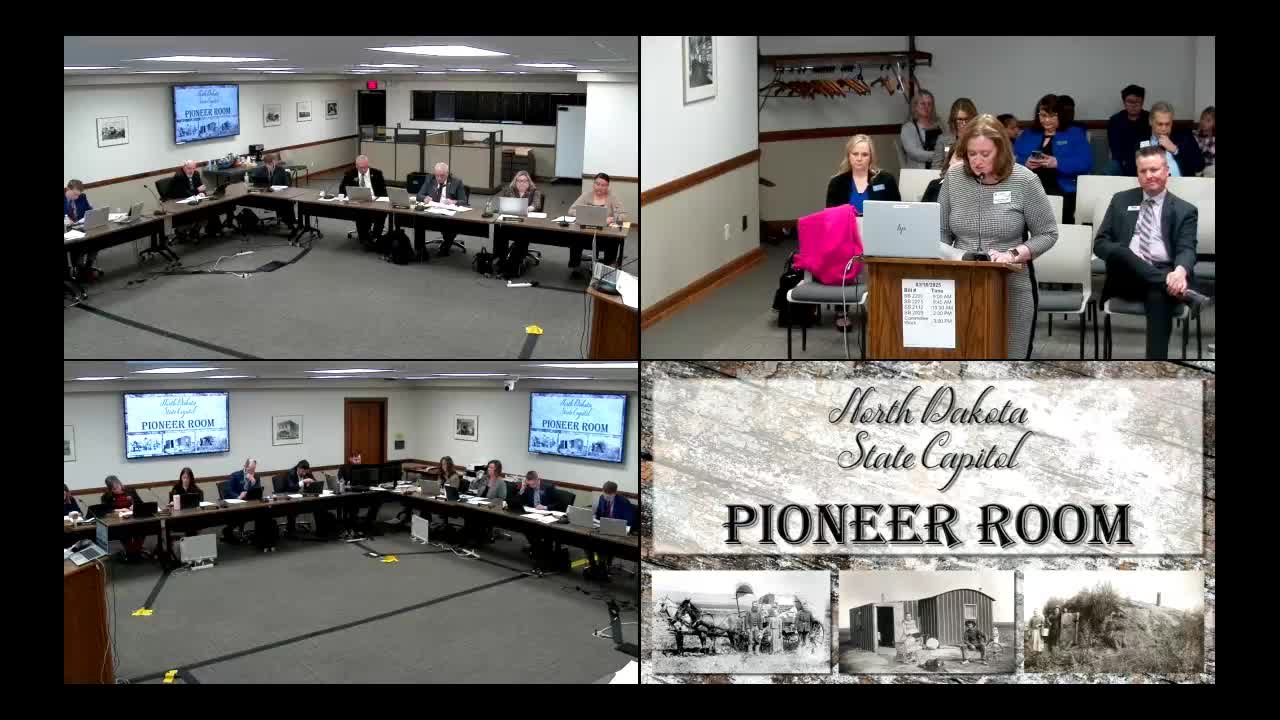Advocates call for improved mental health services for North Dakota children
March 18, 2025 | Human Services, House of Representatives, Legislative, North Dakota
This article was created by AI summarizing key points discussed. AI makes mistakes, so for full details and context, please refer to the video of the full meeting. Please report any errors so we can fix them. Report an error »

In a pivotal meeting of the North Dakota House Human Services Committee, the urgent need for enhanced mental health support for children took center stage. As the clock ticked past 8:57 AM on March 18, 2025, advocates and committee members gathered to discuss the pressing challenges facing youth with significant mental health struggles in the state.
A key speaker highlighted the alarming gap in services, noting that many children are not receiving the necessary in-home support or access to foster care resources. This lack of support can leave families struggling to maintain community placements for their children. The speaker emphasized the importance of case aides, or personal care attendants, who can provide essential assistance in the home environment.
The discussion also revealed a concerning trend: North Dakota has seen a decline in available crisis stabilization beds, leaving children in mental health crises without appropriate places to turn. While the state offers a shelter care program, there is a growing consensus that its current model does not adequately meet the needs of children facing mental health challenges. The inconsistency in regional availability of shelter care programs further complicates the situation, with some areas lacking these critical resources altogether.
As the conversation unfolded, the need for a comprehensive continuum of care became increasingly clear. With over 18,000 children in North Dakota identified as having serious emotional disturbances, the call for accessible community-based services resonated strongly. The speaker shared a personal story about raising a child with severe mental health issues, illustrating the profound impact that proper support can have on families.
The testimony underscored the importance of appropriate placements for children in need of care. The speaker expressed concerns about the proposed life skills and transition center, advocating instead for the expansion of existing psychiatric residential treatment facilities, such as the Ruth Myers Adolescent Center in Grand Forks. This state-run facility is better equipped to address the specific needs of children with mental health struggles, providing a safer and more suitable environment.
As the meeting progressed, committee members engaged in discussions about the barriers to effective placements and the potential for rule changes that could facilitate better access to necessary services. The overarching message was clear: community support is vital in preventing out-of-home placements and ensuring that children can thrive within their families and communities.
In conclusion, the meeting served as a crucial platform for addressing the urgent needs of North Dakota's youth facing mental health challenges. As advocates continue to push for systemic changes, the hope remains that a more robust support network will emerge, allowing families to access the resources they need to foster healthier, safer environments for their children.
A key speaker highlighted the alarming gap in services, noting that many children are not receiving the necessary in-home support or access to foster care resources. This lack of support can leave families struggling to maintain community placements for their children. The speaker emphasized the importance of case aides, or personal care attendants, who can provide essential assistance in the home environment.
The discussion also revealed a concerning trend: North Dakota has seen a decline in available crisis stabilization beds, leaving children in mental health crises without appropriate places to turn. While the state offers a shelter care program, there is a growing consensus that its current model does not adequately meet the needs of children facing mental health challenges. The inconsistency in regional availability of shelter care programs further complicates the situation, with some areas lacking these critical resources altogether.
As the conversation unfolded, the need for a comprehensive continuum of care became increasingly clear. With over 18,000 children in North Dakota identified as having serious emotional disturbances, the call for accessible community-based services resonated strongly. The speaker shared a personal story about raising a child with severe mental health issues, illustrating the profound impact that proper support can have on families.
The testimony underscored the importance of appropriate placements for children in need of care. The speaker expressed concerns about the proposed life skills and transition center, advocating instead for the expansion of existing psychiatric residential treatment facilities, such as the Ruth Myers Adolescent Center in Grand Forks. This state-run facility is better equipped to address the specific needs of children with mental health struggles, providing a safer and more suitable environment.
As the meeting progressed, committee members engaged in discussions about the barriers to effective placements and the potential for rule changes that could facilitate better access to necessary services. The overarching message was clear: community support is vital in preventing out-of-home placements and ensuring that children can thrive within their families and communities.
In conclusion, the meeting served as a crucial platform for addressing the urgent needs of North Dakota's youth facing mental health challenges. As advocates continue to push for systemic changes, the hope remains that a more robust support network will emerge, allowing families to access the resources they need to foster healthier, safer environments for their children.
View full meeting
This article is based on a recent meeting—watch the full video and explore the complete transcript for deeper insights into the discussion.
View full meeting
